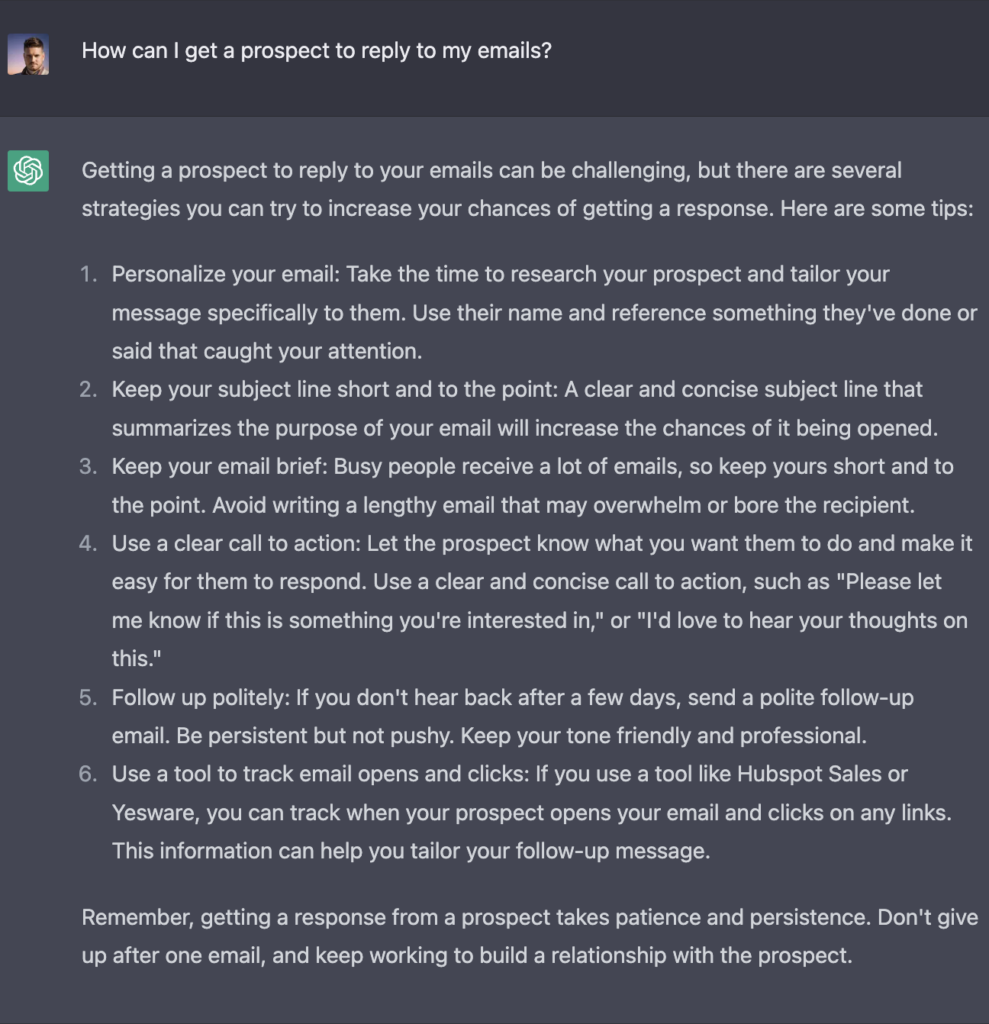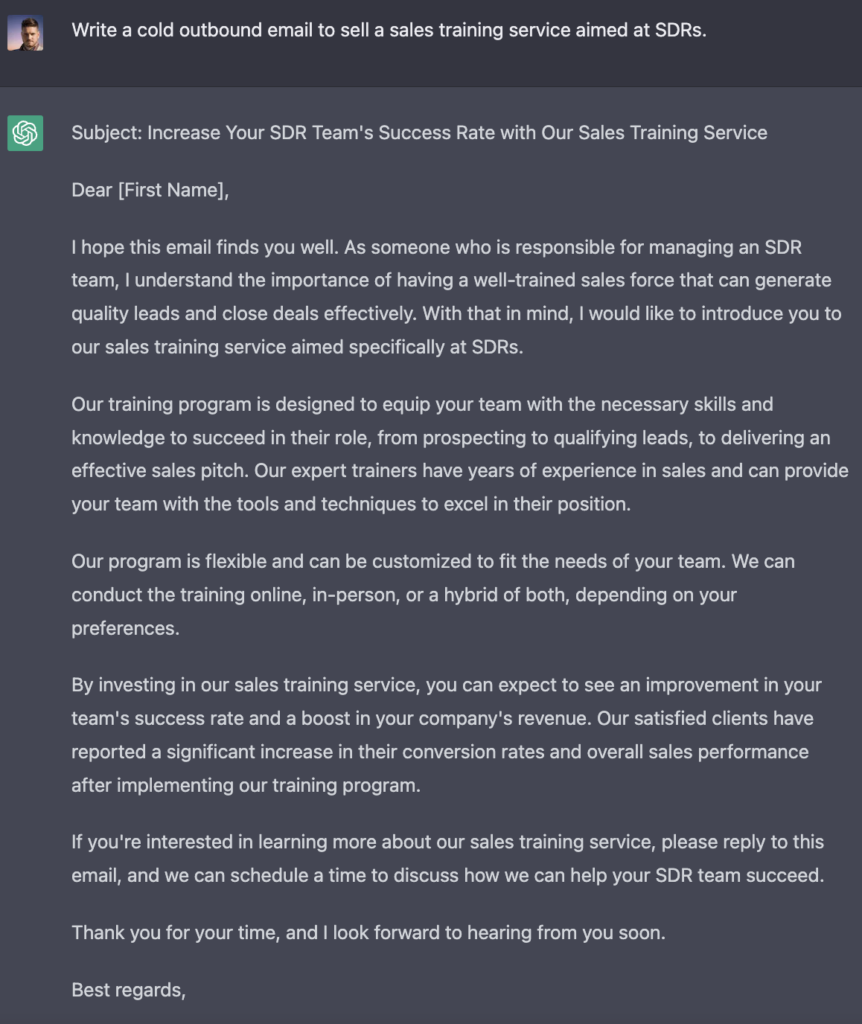Today’s newsletter is brought to you by The AI Outreach System. It’s my tactical guide to using Artificial Intelligence to book meetings. It’s now available for pre-order.
In today’s issue, I’m going to share 3 mistakes salespeople do when using ChatGPT, and how to fix them.
If you follow these steps, you’ll stop using ChatGPT as a nice-to-have, and you’ll discover 3 ways you can include it in your daily work to prospect more efficiently.
Here’s the list:
Here’s a comment I see all the time when I share tips about ChatGPT:

It’s the proof most people think about ChatGPT as a web crawler, or an AI version of Google.
ChatGPT is actually an AI trained with a set of data, which stops in 2021. It doesn’t have access to the internet, and it can’t crawl a web page. And that’s the reason most outputs are terrible.
What to do instead?
ChatGPT not being able to access the internet doesn’t mean you can’t use it for prospecting. For example, I shared a guide on how to use it for prospect research.
In fact, you just need to train ChatGPT on what you want it to generate for you. For example, I ask ChatGPT to act like a prospect I’m doing research on, and I share details about this person and the company they are working for.
You can copy/paste details like the about section of their LinkedIn profile, or details about the company they are working for. The more details, the better the output will be.
A mistake I see all the time is salespeople asking ChatGPT to generate ideas on approaching a customer. They come up with prompts like this:

As you can see, the answer is pretty generic. It doesn’t give any tactical details on how to approach prospects, there’s no concrete steps you can follow.
First, shift your perception of ChatGPT, and consider it like a super smart new colleague. This new colleague won’t be able to do anything without proper training. That’s why you have to train ChatGPT on what something good looks like to you.
For example, you can show it what a good email subject line looks like and ask it to come up with variations of subject lines for a different cold email.
By the way, you can grab my Ultimate LinkedIn Outreach Sequence to train ChatGPT on what a good LinkedIn sequence looks like.
This last mistake is the one I see the most. A lot of salespeople believe they can ask ChatGPT to spit out killer outbound emails with a simple prompt. Here’s how it looks like:

Pretty bad, right?
This is why a ton of people don’t see the potential of ChatGPT for cold email.
Again, you need to train ChatGPT on what a good cold email looks like. There are tons of different frameworks you can use, but I personally like this one:
Question: A question based on a symptom of a problem
Teaser: A potential resource to help alleviate the symptom mentioned in the question
CTA: A simple question to get a reply
Here’s an example:
Question: How do you avoid and inconsistent of undefined sales process?
Teaser: If you’re interested, I can share a 3-step checklist to help you audit your sales process.
CTA: Worth checking it?
Now you can paste this framework + example in your prompt, and ask ChatGPT to come up with cold emails that follow this framework. I wrote a detailed guide about that.
Bonus: Grab my Ultimate LinkedIn Outreach Sequence to get some inspiration on cold outbound frameworks.
And these are 3 mistakes salespeople make when using ChatGPT. Don’t be one of them and think about ChatGPT as a smart new colleague who needs to be trained on the job.
Hope this helps
Cheers,
Thibaut Souyris
Get my free, 4 min weekly newsletter. Used by 5.900+ salespeople to book more meetings and work when, where, and how they want.
Get my free, 4 min weekly newsletter. Used by 5.900+ salespeople to book more meetings and work when, where, and how they want.

Enter your e-mail address to download The Ultimate LinkedIn Outreach Sequence — the tactical guide that shows you how to start conversations with prospect by being relevant and creative.
I will never spam you, or sell your info.
Get each episode in your mailbox when they release. Grab special discounts and offers.